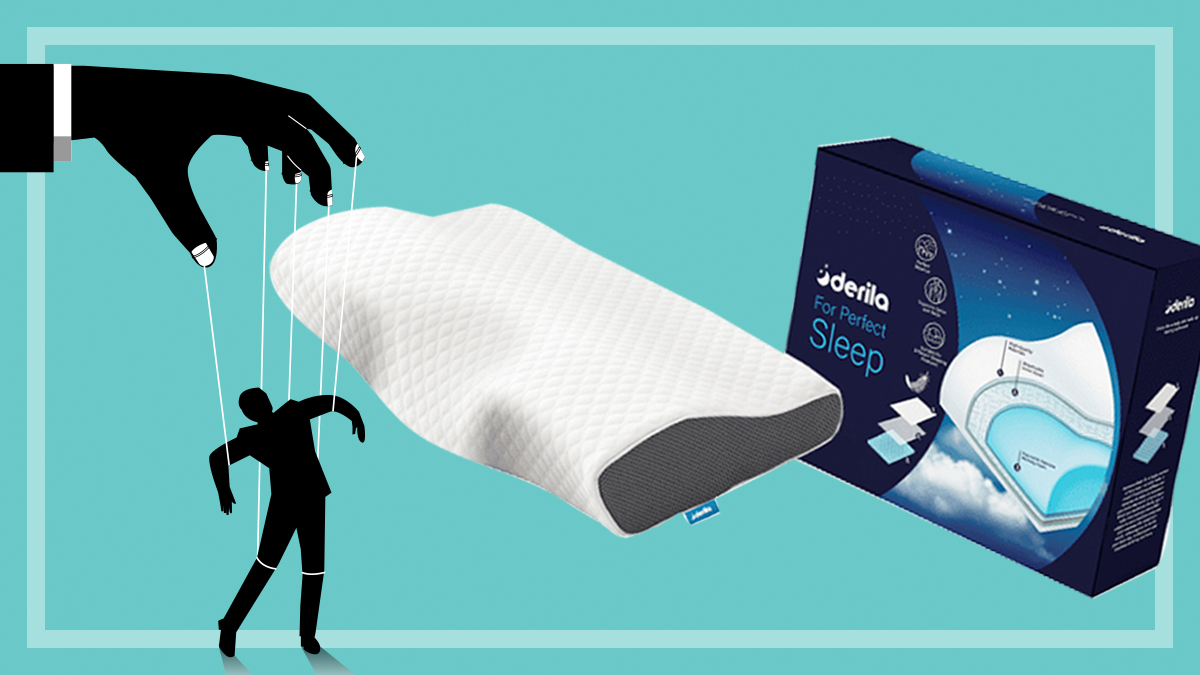Get our independent lab tests, expert reviews and honest advice.
Inside the world of fake online reviews

Need to know
- The direct influence of fake reviews is estimated to generate more than $150 billion in spending globally each year
- Unscrupulous businesses continue to openly recruit fake reviews on social media
- Our nationally representative survey heard from shoppers who had been offered inducements to change a negative review
On this page:
- How common are fake reviews?
- Shoppers coerced to change negative reviews
- Inside Facebook's fake review groups
- What are review platforms doing to combat the fakes?
- How to spot fake reviews
Since the dawn of the internet, when we took our first tentative steps into the early forums and chat rooms, lies and falsehoods have flourished.
Today, despite the best efforts of those seeking to stop harmful online deception, fakery continues to thrive. From catfishing on dating sites to elaborate financial scams, deceit prospers in a setting where anonymity is easy.
The realm of online reviews is no exception. As consumers continue to struggle to find accurate, honest and authentic reviews, we want to know how common it is to encounter a fake review.
We also ask, what are the platforms that host these reviews doing to counteract businesses and individuals who try to deceive us?
How common are fake reviews?
The impact of fake reviews is real and costly. A 2021 report from the World Economic Forum (WEF) estimated that the direct influence of fake online reviews translates to global spending of $152 billion, $900 million of which is spent by Australians.
Platforms that host customer reviews are well aware fake reviews are a problem and they fight back with tools and systems designed to detect and remove them.
The direct influence of fake online reviews translates to global spending of $152 billion
Amazon told us it proactively blocked more than 200 million suspected fake reviews from its stores in 2022. Trustpilot claims more than 2.7 million fake reviews were removed from its site in 2021, and Google told us that in 2022 it blocked or removed more than 115 million policy-violating reviews.
Fake reviews persist despite platforms’ efforts
Unfortunately, despite these actions, the problem of fake reviews persists. The WEF estimates that four percent of online reviews are fake. But according to some, that’s probably the tip of the iceberg.
“Fake reviews are likely grossly underreported, simply because they remain subversive and undetected,” says Jana Bowden, professor of marketing at Macquarie University’s School of Business.
Falsification, lies and deceit are insidious problems and absolutely rife in the world of reviews
Jana Bowden, professor of marketing at Macquarie University's School of Business
“Harvard found that in 2020 alone, 4.5 million sellers procured fake reviews by paying people to write them. Falsification, lies and deceit are insidious problems and absolutely rife in the world of reviews.”
Customer reviews are big business. In August 2021 the WEF predicted that online reviews would influence $3.8 trillion in global spending in that year. So we shouldn’t be surprised that unscrupulous businesses might be tempted to do whatever it takes to ensure they get good reviews.
Shoppers coerced to change negative reviews
Fake positive reviews aren’t the only issue preventing shoppers from getting the true measure of a product. Companies are also incentivising people to remove negative reviews.

In our June 2023 nationally representative Consumer Pulse survey, CHOICE asked why those who’d recently written a product review had done so.
Around 10% said it was because they were given an inducement of some kind – like a discount, or cashback. Around three percent of those respondents were offered these benefits in return for a positive review, or to change a negative review to a positive one.
That was the experience of Phil Terzopoulos from Earlwood, NSW.
“I recently bought a couple of men’s compression shorts from eBay. All clothing that I normally buy is sized XL so I bought two pairs sized XL.”
“Upon receiving them, I found them to be uncomfortably tight. I provided this feedback to the seller and stated that I would still wear them hoping they would stretch.”
Over the course of the next two days the seller messaged him seven times, asking for further information, and eventually offered him a refund if he would change his review to a positive one.
“I messaged them back stating that I was not interested in any refund, would not amend my comment and to cease messaging me,” says Phil.
Rachel had a similar experience. She engaged a local plumber to install a dishwasher connection but was dismayed to find the invoice she received after the work was completed exceeded another quote by 50% and included charges for products and services she says were not supplied.
I wrote the review to warn others … my review stands and I won’t take their money because I don’t think it would be ethical
She queried the bill multiple times but in the end felt she had no choice but to pay, after which she left a review that outlined the reasons for her unhappiness.
“Since then they’ve emailed, telephoned and sent text messages multiple times about the review. They’ve offered me $160 and while the guy never explicitly said I needed to change my review, that’s what his call was about and the level of harassment clearly indicates he wants action on it.
“I wrote the review to warn others and as they haven’t addressed the issues at all … my review stands and I won’t take their money because I don’t think it would be ethical,” says Rachel.
The power of negative reviews
Every online review platform we looked at has policies in place to prohibit businesses from offering these sorts of inducements, but clearly it still happens. Most likely because negative reviews have a lot of power.
As part of a study published in 2022, Professor Bowden and international collaborators at Finland’s Jyvaskyla University looked at more than 12,000 tweets. They found that negative reviews had a powerful impact on the way consumers form their attitudes to products and businesses.
“Negative information is especially potent and viral in terms of its spread. It impacts current buyers of a product who might be questioning their choices, but it also puts off those who have never bought the product, meaning that the brand loses both current and future consumers,” says Bowden.
Inside Facebook’s fake review groups

Unscrupulous businesses don’t just sit around waiting for bad reviews that they can encourage their customers to change.
It isn’t hard to find online sellers actively enlisting positive reviewers, often in exchange for free products. A favourite way to find these reviewers is through social media.
Earlier this year we searched Facebook using terms such as, “Amazon reviewers”, “Google reviewers”, and “Trustpilot reviewers”.
In less than half an hour we found over a dozen groups, with members totalling more than 45,000.
In these groups, we saw listings from sellers seeking positive reviews in exchange for free products, with everything from beauty products and pet supplies to smartwatches, headphones and toys on offer.
We got in touch with one of the businesses touting their products and were sent a list of items available to buy through Amazon Australia. The seller told us they worked for a marketing company and said if we purchased from them and gave a positive review they would provide a refund.
We asked Meta, the company that owns and operates Facebook, about how they stop these groups from recruiting deceptive testimonials.
A spokesperson told us: “Meta doesn’t allow the coordination of harmful or fraudulent activity on Facebook, and we have a dedicated policy against fraud and deception. Under this policy, we do not allow people to solicit, offer or trade fake user reviews.”
They also removed the groups we brought to their attention.
What are review platforms doing to combat the fakes?
We asked Amazon, Google, Trustpilot and productreviews.com about the systems and processes they use to combat fake reviews.
Amazon
Rebecca Mond, Amazon’s head of external relations for ‘trustworthy reviews’, told us that Amazon’s robust guidelines are all geared towards ensuring their customers make what they call an “unregretted” purchase decision.
The platform uses a combination of machine-learning technology and human investigators who review what the technology’s algorithms uncover. This allows the online retailer to continually refine the system for detecting fake reviews.
Already this year we have taken legal action against 147 bad actors across the United States, China and Europe
Rebecca Mond, Amazon
Amazon also focuses on enforcement efforts, which take the form of lawsuits against fake review brokers.
“Already this year we have taken legal action against 147 bad actors across the United States, China and Europe, and those actions are working to shut down some of the largest fake review brokers,” Mond says.
In a follow-up to our interview, Amazon told us they are committed to continuously evaluating and innovating in order to stay ahead of bad actors as they devise new tools and techniques to evade detection and harm customers.
“Permanently ridding [online platforms of] fake reviews across all sectors will require greater public-private partnership, including collaboration between the affected companies, social media sites, and law enforcement, all focused on a goal of greater consumer protection,” a spokesperson told us.

In response to our queries, Google told us that they have automated systems and trained operators who work around the clock to monitor Maps (the review platform for Google) for suspicious behaviour. “We remove content that violates our policies and we also encourage people to flag any such content so we can review and take action,” they say.
Google also uses machine learning to minimise bad content and take legal action to “fight malicious actors who violated our policies”.
“When we find reviewers trying to mislead people, we take action ranging from content removal to account suspension and even litigation,” they add.

Trustpilot
A spokesperson for Trustpilot told us that the platform has systems and technology in place to allow them to detect potential misuse and take action to identify and remove fake reviews, claiming that “we do not hesitate in taking strong enforcement action”.
They also told us that fake reviews account for only a small proportion of the total volume.
“Out of a record 46.7 million written on the platform in 2021, over 2.7 million suspected fake reviews were detected and removed,” they told us.
“Whilst that figure may sound large, in reality it’s equivalent to just over five percent of all reviews submitted to the platform that year,” the spokesperson says.
Productreview.com.au
A spokesperson for the website told us that they could not reveal any specific details of how they catch fake reviews because it would provide assistance to people trying to game the system.
“Catching fake reviews has always been and always will be one of our top priorities. We continuously assess many data points and patterns of reviews submitted and published on our platform. We also notify consumers when we believe that a significant proportion of reviews submitted for a listing are fake,” they say.
“Additionally we work with ACCC, Fair Trading, and other government agencies when it comes to combating fake reviews.”
What is the ACCC doing?
In November 2022, the Australian Competition and Consumer Commission (ACCC) recommended a range of new measures to address harms from digital platforms, saying there should be stronger requirements for combating scams and fake reviews.
“The ACCC is prioritising deceptive and manipulative advertising and marketing practices in the digital economy,” a spokesperson told us.
In its fifth Digital Platform Services Inquiry (DPSI) report, it recommended targeted measures to protect consumers against fake reviews, including the establishment of a new digital platform ombuds scheme.
How to spot fake reviews
The ACCC advises consumers to look at a range of sources for reviews when researching before making a purchase, adding that unfortunately, there are a variety of methods used to manipulate customer reviews.
Signs that a review might be fake or manipulated include:
- a spike in very positive or negative reviews in a short period
- lots of positive reviews and no negative ones on a business’s website, compared with review platforms showing a mix of reviews for that business
- the same or similar reviewers’ names or language used across reviews
- reviews without specific detail, or with incorrect details, about the business or product
- references being made to free gifts or other incentives.
“The trouble for consumers is that knowing what’s authentic and what’s inauthentic isn’t straightforward, and in reality, falling for a fake review is inevitable,” says Bowden.
Read more in our article, How to spot a fake online review.
About reviews on our site
CHOICE product reviews and recommendations are based solely on the results of our rigorous and independent testing. User reviews that appear on choice.com.au are moderated by our service provider and CHOICE staff.





